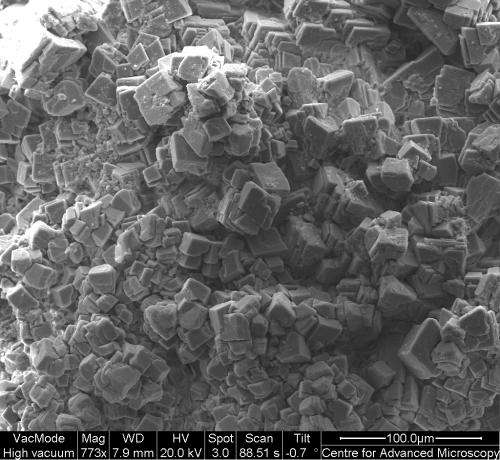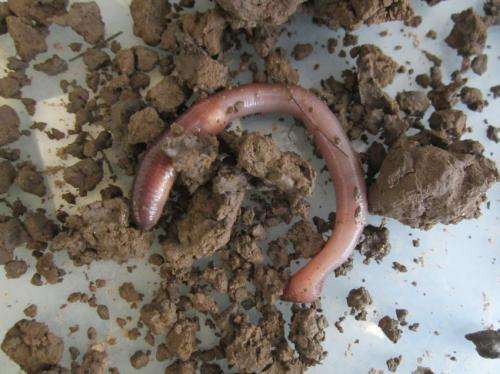Earthworms could help scientists 'dig' into past climates

A team of UK researchers believe earthworms could provide a window into past climates, allowing scientists to piece together the prevailing weather conditions thousands of years ago.
A laboratory study by researchers from the Universities of Reading and York has demonstrated that balls of calcium carbonate (small lumps of chalk-like material) excreted by the earthworm Lumbricus terrestris – commonly known as lobworms or nightcrawlers - maintain a memory of the temperature at which they were formed.
This, say the researchers, in an article in the journal Geochimica et Cosmochimica Acta, means that calcite granules, commonly recorded at sites of archaeological interest, have the potential to reveal important information about past climates which could be used to enhance and benchmark climate change models.
The study, which also involved English Heritage's Centre for Archaeology, was funded by the Natural Environment Research Council (NERC). Lead author Dr Emma Versteegh from the Department of Geography and Environmental Science at the University of Reading, said: "These chalk balls will allow us to reconstruct temperatures for specific time intervals in which they were formed. Reconstructions like this are interesting for archaeologists, because they give a climatic context to their finds. More importantly, climate proxies are the only means we have to study climate beyond the instrumental record, which only goes back about 150 years.
"This knowledge about past climates is of vital importance for developing and benchmarking climate models that make predictions for the future. Many different proxies already exist, but no proxy is perfect, or is available in every location, so it is good to have many different ones."

The proof of concept study involved keeping modern-day Lumbricus terrestris at different temperatures, then carrying out isotopic testing on the calcite granules excreted. This successfully demonstrated that the granules remembered the temperature at which they were formed.
Principal Investigator Professor Mark Hodson from the University of York's Environment Department, and formerly of the University of Reading, said: "There are many conflicting theories about why earthworms produce calcite granules, but until now, the small lumps of chalk-like material found in earthworm poo have been seen as little more than a biological curiosity. However, our research shows they may well have an important role to play, offering a window into past climates."
The researchers are now gathering samples from archaeological sites dating back thousands of years in preparation for isotopic testing. Dr Stuart Black, from the University of Reading's Department of Archaeology, added: "We believe this new method of delving into past climates has distinct advantages over other biological proxies. For example, we believe it will work for the full seasonal range of temperatures, whereas methods such as tree rings, do not "record" during winter. In addition, because the chalk balls are found in direct context with archaeological finds, they will reveal temperatures at the same location. At present, links are often attempted with climate proxies many hundreds or even thousands of miles away."
More information: The paper 'Earthworm-produced calcite granules: a new terrestrial palaethermometer?' is published in the journal Geochimica et Cosmochimica Acta. DOI:10.1016/j.gca.2013.06.020. The article can be viewed at www.sciencedirect.com/science/ … ii/S0016703713003542
Journal information: Geochimica et Cosmochimica Acta
Provided by University of York


















